My recent trip to Dire Dawa was quite the adventure. I often feel pressured to say good things about the places I travel to even when certain encounters have been bad. It feels disrespectful to natives and unseasonable traditionalists to say you didn’t enjoy a place. But I’m going to be honest with you. This was my third and most extensive visit to Dire Dawa. I absolutely love Dire. It’s the only place I can comfortably summon my phlegmy voice to fit in. But there were things I did not like about it.
The first few days of my stay, I got to look around the city with the group of artists I was traveling with. We were scouting locations to make our film so we didn’t really find ourselves in the gutters at first. We went to pretty, touristy places.
We stayed at the uncontested Harla Inn with its beautiful compound and amazing food. It was the perfect setting for a creative getaway: aesthetic lighting, a closed compound with an AC in every room, quiet enough so you can work undisturbed and the hosts were just wonderful. It would not be an exaggeration to say I had some really memorable breakfasts at this place. If I ever find myself in Dire again, this is definitely where I will go and you should too.
*
To get some relief from the scorching heat, our group made a stop at Rich Coffee one afternoon. They served us olive wood smoked water, some sesame snacks and coffee. It was quite the experience. There were some photos with historic references in the place and a museum as well. Instead of telling you about it, I’m just gonna refer you to the video my friend Amu made about it. It is another spot I definitely recommend.
The third thing I would recommend is the train. I’ve had several people warn me about the train ride before the trip but I somehow found it more enjoyable than I expected. That might have something to do with the company I was with — it was a fun bunch of people. There was some concern about boredom before our departure. Nuhi kept asking what we were supposed to do with ourselves for an eleven hour train ride but the thing is, I haven’t been bored since 2019.
You might be startled by the strong smell of bug spray that will greet you at first although you eventually get used to it. I was traveling after a busy week so I mostly slept during the ride. But I’d also brought Children of Blood and Bone by Toni Adeyemi with me so I was alright.
If you are prone to restlessness, I recommend you carry playing cards, books, and anything else to keep your mind active. You won’t have internet for the most part. You can talk to strangers if that is your thing but there isn’t much to look at outside the window if you’re the melodramatic melancholic type. You’ll also have to pack your own lunch because they only sell bread, soda, coffee and tea on the train.


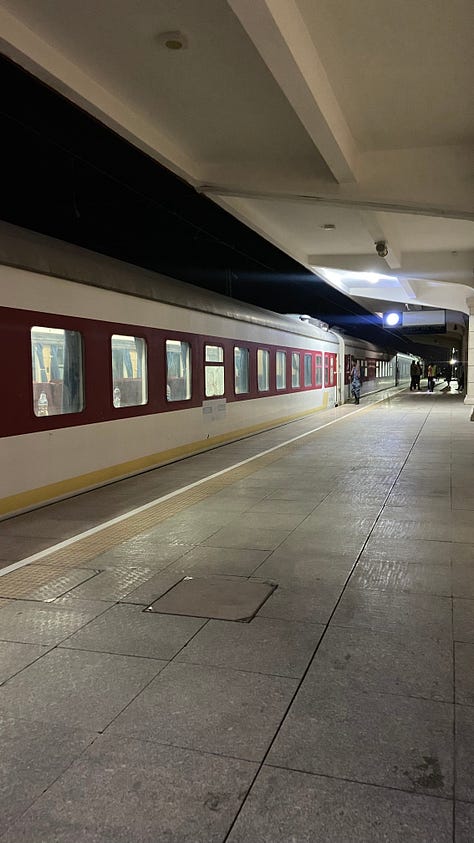
*
On the fourth day of our stay, I ditched our film set and got lost in Dire Dawa. It was a deliberate search for adventure but also, I actually got lost and it was scary for a minute. 1
I went for a walk to clear my mind from the complication with the project we were working on and my feet led me to a second hand book store. That usually works for me in stressful situations in Addis so I paid the place a visit. The quality of the books at this book store made me think about how we can’t really blame people for not reading so much anymore.
Thinking about that, I followed my feet to a wide open space where about a hundred kids were playing football in small clusters, all at the same time. A kind little boy told me this was Conel Football Field. I sat by this field for about an hour experiencing an array of play on the senses. The kids played football, birds flew in formation overhead, smoke rose from several spots in the distance, a mosque and a church sang in mismatched melodies and fundamentals but it was still beautiful. The sun slowly sank across the field into the mountain-less horizon behind the line of trees. To my highlander disposition, the loudness and juxtaposition of everything should have been excruciating but I sat there and let a different type of life take over.
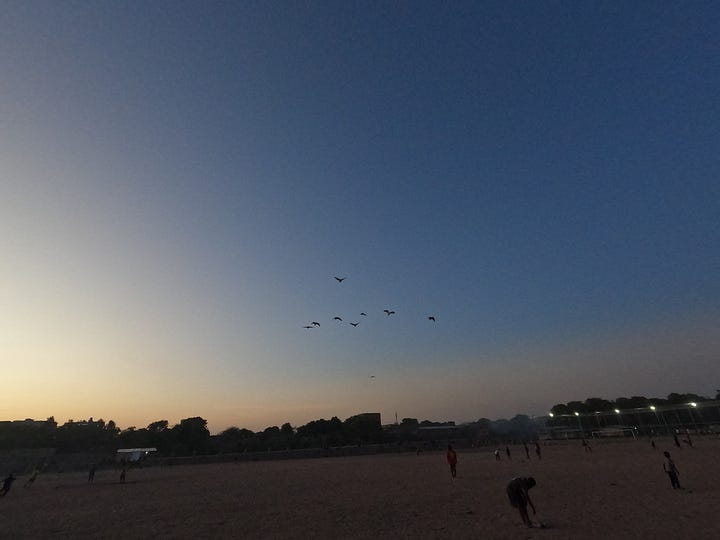
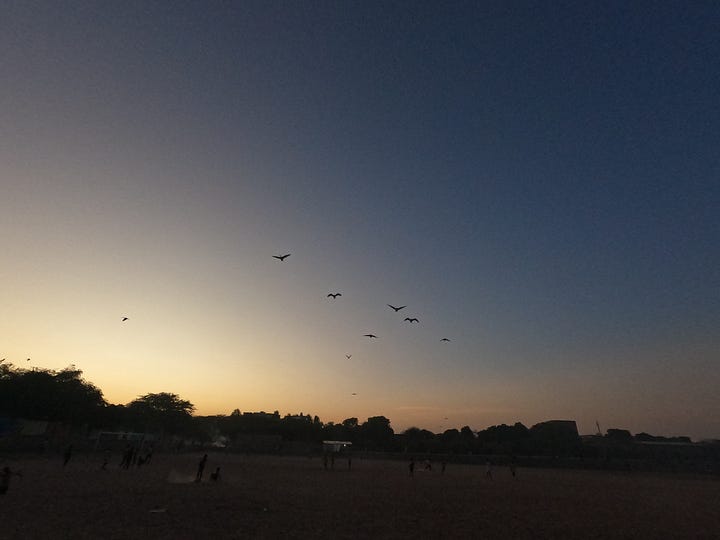
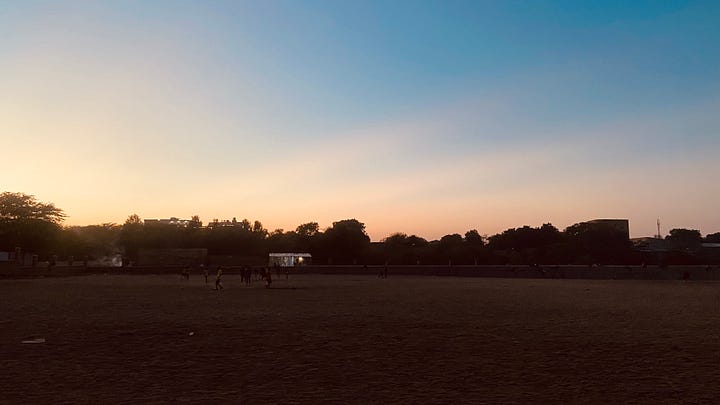
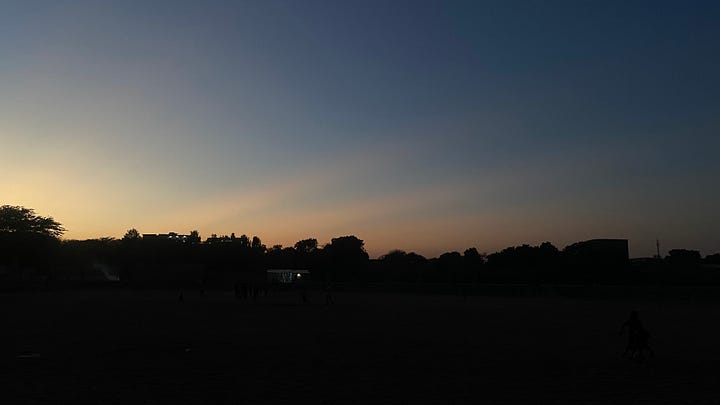
It soon got dark.
I had on a sugar pink backpack, black leggings and a loose netted top potentially signaling to everyone (despite my unnaturally disguised phlegmy voice) that I wasn’t a native. I tried to get a Bajaj back but somehow none of the drivers seemed to know where I was headed. When they spotted the google maps app on my phone, a couple of them even laughed at me. So I did a brave and stupid thing. I decided to walk to the guest house.
Long story short, I somehow found that the comely tree-shaded roads lined by coffee spots and pleasant Khat chewers that I’d walked past my way to Conel Field had transformed into Neon lights and “outside bars” on my way back. There were dark trash burning sites on my right and mountains of plastic bottles on my left. And there were people tending to them— naked men in tatters, restless women in diryas, unhappy people.
The fear I sensed in the back of my head wasn’t necessarily because I was in any real danger but perhaps because my life in Addis had programmed me against dark, dingy places and strangers. A couple of times, I stomped past a scary path and then realized I was going the wrong way and had to walk back past the scary people again. They stared at me like I was crazy (or maybe I imagined it because I was terrified).
When I finally made it to the guest house, I was wearing the desert sand all the way to my hair. It’s once I had showered and calmed down that I realized my perception of Dire Dawa had been adjusted a little bit. I kept thinking about how despite the teasing and the loudness, the people of Dire Dawa really are kind and accommodating in the day time. But it felt to me like during that walk in the night, I saw a desperate side to them. Hidden behind the beautiful tags we give Dire Dawa: the city of love, the desert queen, the eastern jewel, etc… there was some destitution, some tragedy, some mania possibly exacerbated by the constant exposure to khat. Dire Dawa wasn’t just a place with loud, easy going people. It was definitely so much more.
*
Each time I’ve visited Dire Dawa, I’ve made a stop at Ashewa Meda, one of Dire’s open air markets. Despite the river of trash that greets you at the entrance to Ashewa Meda, it remains one of my favorite places to visit. The array of rags, scents and goods you can buy here is remarkable. Here, life is affordable.
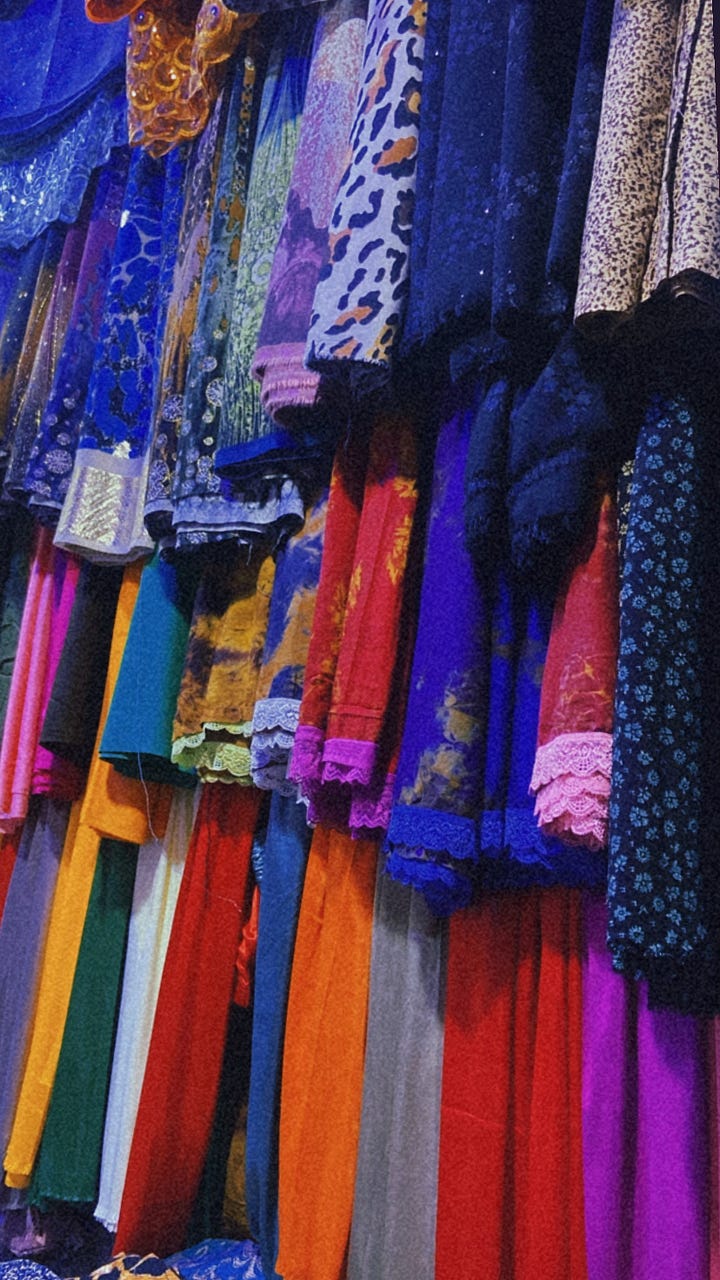
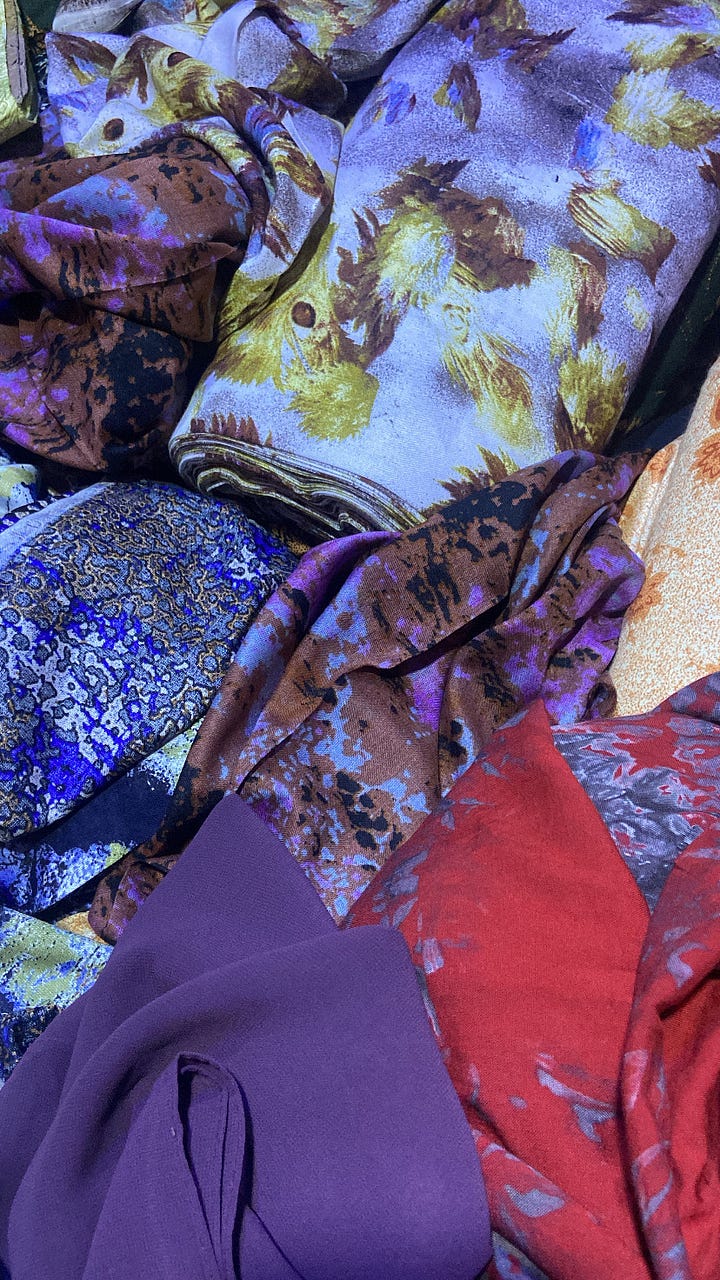
I know I’ve said that perhaps there is a level of poverty we’ve overlooked with all the pretty names we’ve given Dire Dawa but Ashewa Meda makes me realize the pretty names aren’t wrong. They just don't tell the whole story. There is a robust market of really high level goods and perhaps the people of Dire are the way they are because they value community over money. If you’re not picky, you can eat breakfast, lunch and dinner for less than 200 birr. People share food, they share shade, they share everything. One night, we were having a potato dinner on one of the road side street food places and it didn’t feel like some noble altruism when we shared our food with a few hungry people. It was just normal.
My least favorite place in Dire Dawa was the Kefira market. In some sense it’s a great place for a camera — so many colorful vegetables, fruits and spices to add color to your shots but it’s a blessed thing that your camera can not record smells. The strong stench of spices, rotting vegetables and the general unkempt humanity of it all was a little too much even for me. The rain didn’t improve things either. A friendly stranger let us take shelter in his flour mill while it rained and we were all a sneezing frenzy for a good twenty minutes. I would definitely say, if I were to gentrify any part of Dire, I would clean Kefira. Its unique architectural gate is definitely notable and the colors (not just of the food, but the beautiful diryas the women wear) is wonderfully overwhelming but I feel like the inside could use some work to make it more hygienic.
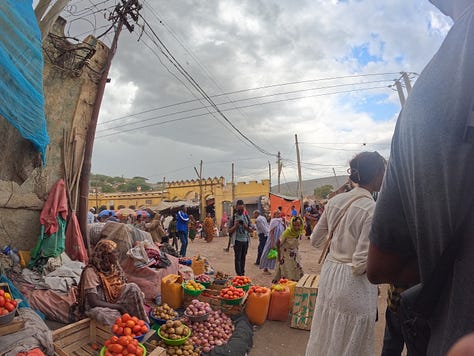
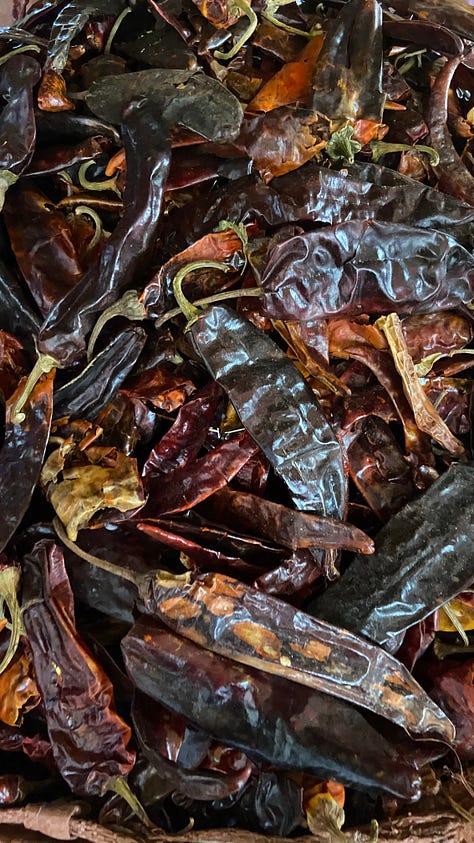
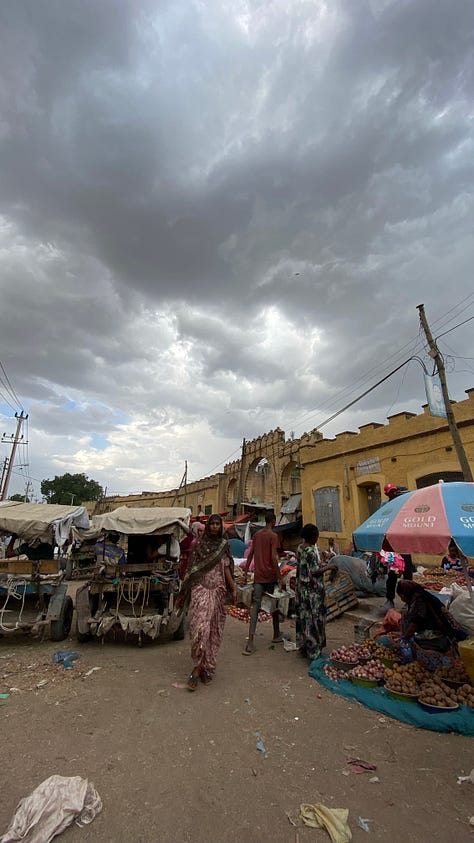
Speaking of architecture, we made friends with a Dire native who later invited us to film a couple of scenes in his home. Unlike the other times where I stayed at a hotel and didn’t get to see the peoples’ lives, this specific part of the trip allowed to me see how the natives live and communicate. I followed some of the people around through their neighborhoods and I got to see some really impressive schematics. Think of the slums in old Piassa but with much more color and really scary climbs and descents. “Don’t worry. The scaffolding is made of train tracks,” our guy told me noticing my debilitating fear of a fall. And sure enough, the space did not look like it could hold so many of. But it did. The bravest of us even managed the roof where we could hear no less than four mosques doing prayers at the same time. It was quite nice.
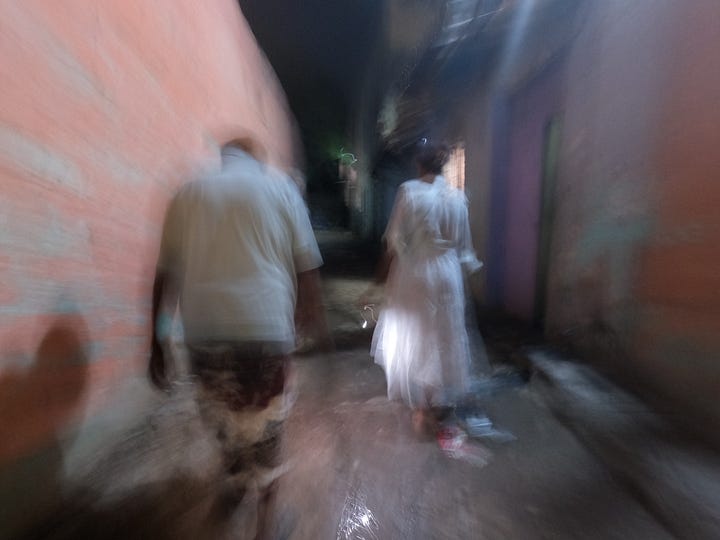
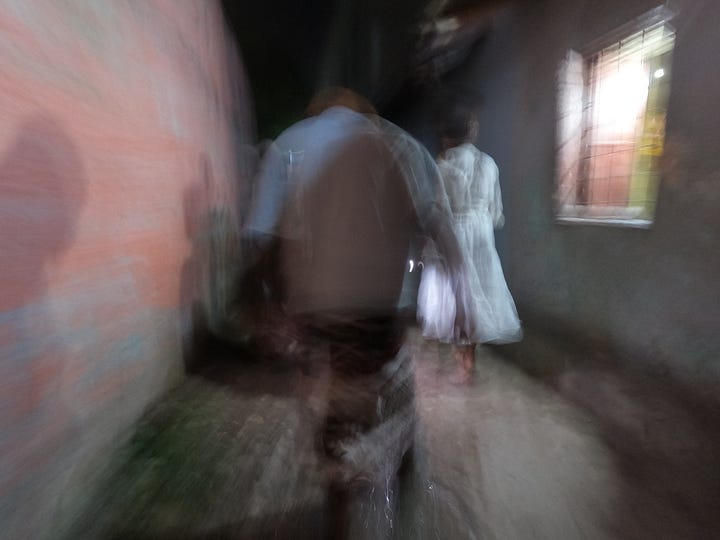

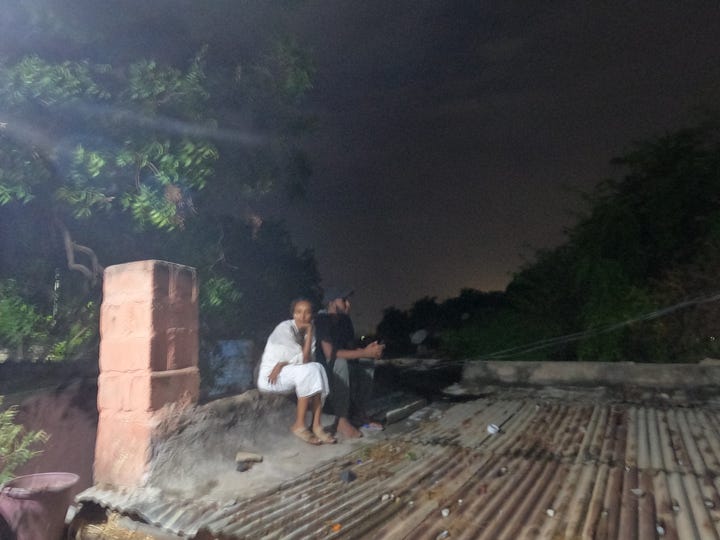
*
That was my last night in Dire Dawa. I was set to fly back early the next morning. The shoot went late but I simply could not return to Addis without getting my sweet fix from Hashimi Sweet Shop. Almost every night of our stay in Dire, our traveler extraordinare Michael Metaferia would get us baklava or halwa to munch on after dinner. That last night, I was too late and even when I braved the walk to the sweet shop by myself at around 8pm, the sweet shop closed before my eyes. I was able to secure my mushebek and halwa from a shop across the street2 but if you have a sweet tooth, I think a trip to Hashimi is not something you wanna sleep on.
*
And that was my trip to Dire Dawa. It was definitely one for the books.
until next time,
Qal
Pro Tip: Google Maps often shows you the shortest route to your destination, not necessarily the safest routes.
I got a whole bag full and it is all gone less than a week in.


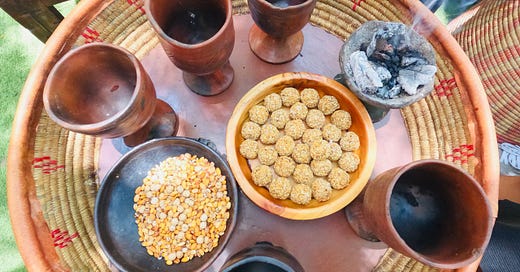


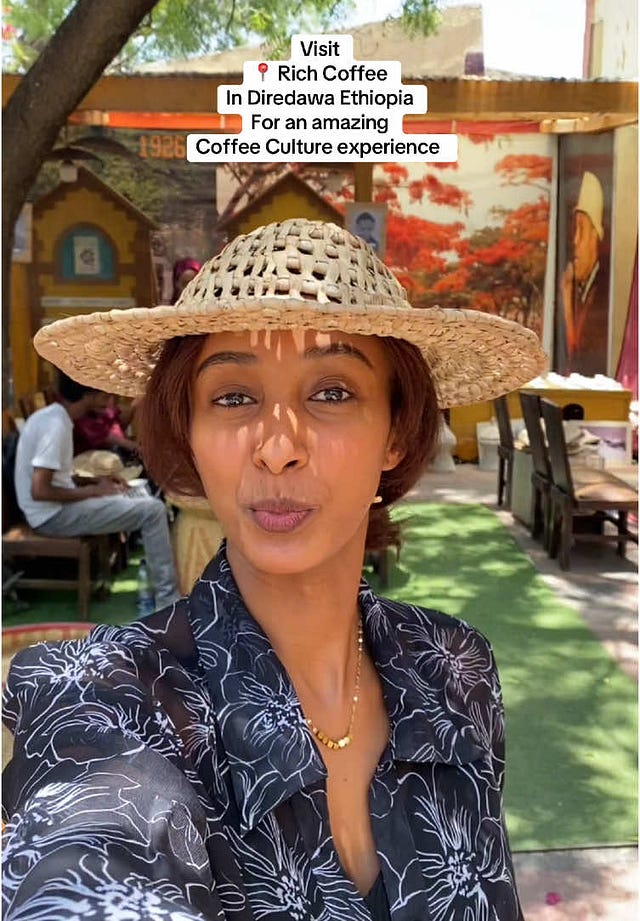


This is a fair and vivid reflection of Dire Dawa through a visitor’s lens — capturing both charm and hardship. But as someone familiar with Dire, I feel it's important to highlight that beyond the aesthetic contrasts and social struggles lies a powerful resilience. Dire Dawa’s identity is deeply rooted in its community’s long-standing philosophy of living together in diversity. Despite economic challenges and systemic neglect over the past few decades, the people of Dire continue to uphold that spirit of unity and coexistence. It’s more than a travel story — it’s a place fighting to preserve its soul.
A very valid observation Qal. As someone who absolutely loves Dire (እትብቴ የተቀበረው እዛ ነው hahaha) and would die on that hill, I was heartbroken the last time I went. I visited the original Chemin de Fer where my parents used to work. It was being swallowed by tall grass and corrosion, and I cried. A place that was once vibrant now stood empty and quiet, yet still trying to stand. I met people who knew my parents; some were fixing old trains with the hope that maybe, someday, someone would come to visit. That whole place could be a museum, it’s so rich in history!
I went to Cinema Empire and it looked like a ghost town. I walked the streets of Kezira and cried again, the trees that once formed a dome-like shade now looked sad and tired. I visited the house we once lived in, and again, I cried. It was lifeless, now occupied by federal forces.
I knew Dire when she was full of life, my parents and grandparents knew her in her prime. Yes, her people are beautiful, but I often wonder if Dire can still claim the names she once held with pride. She has changed, and so have her people. I sometimes feel that she is still running on the fumes of her history.
And yet, I still love her. So very much. The man in the previous comment is right, Dire is fighting to preserve her soul.